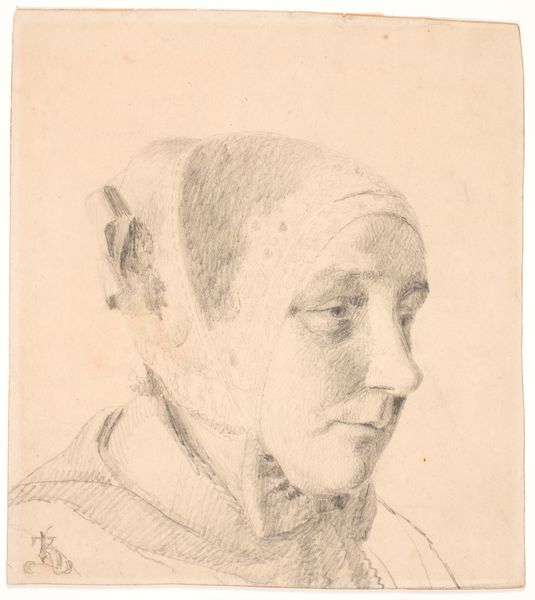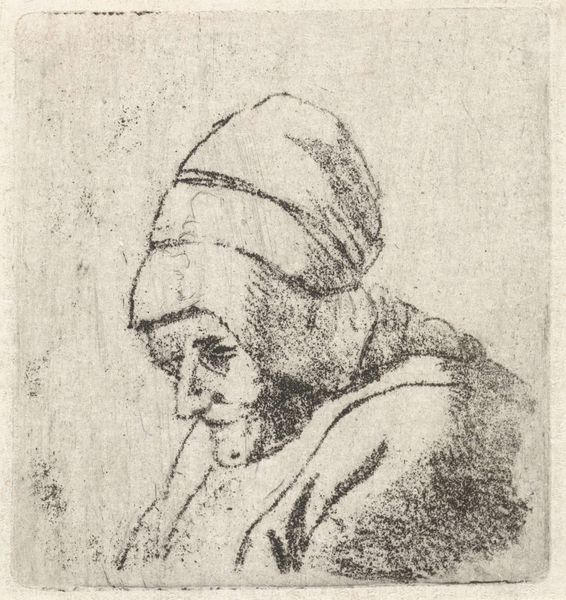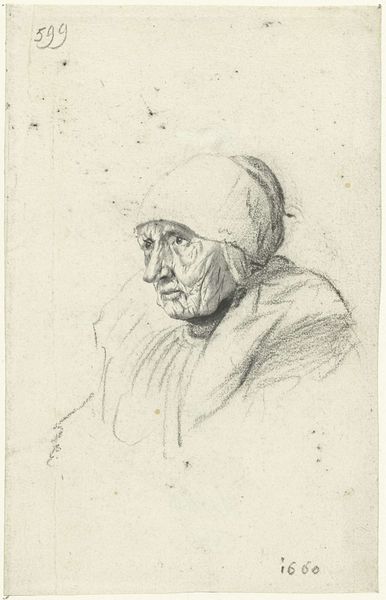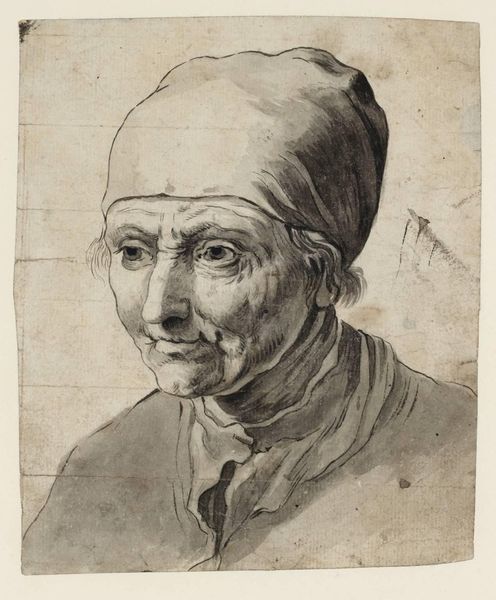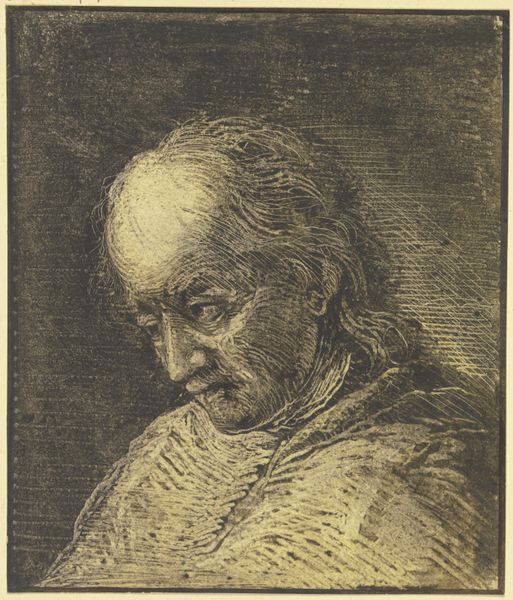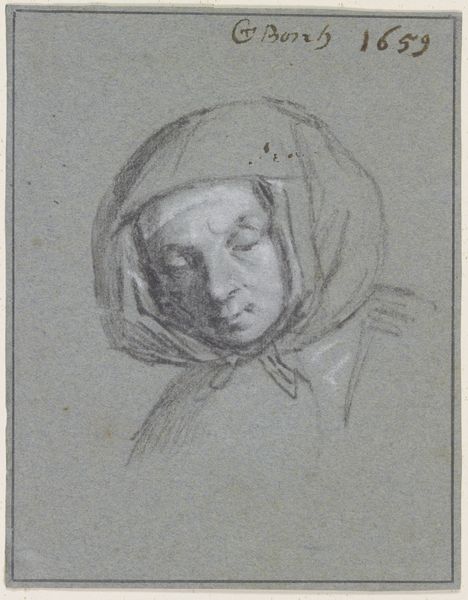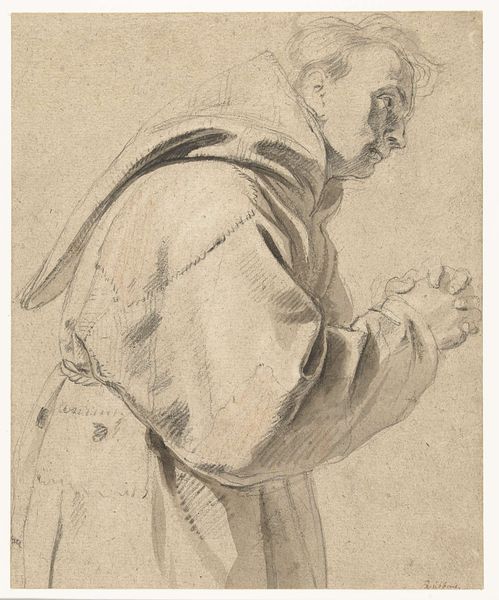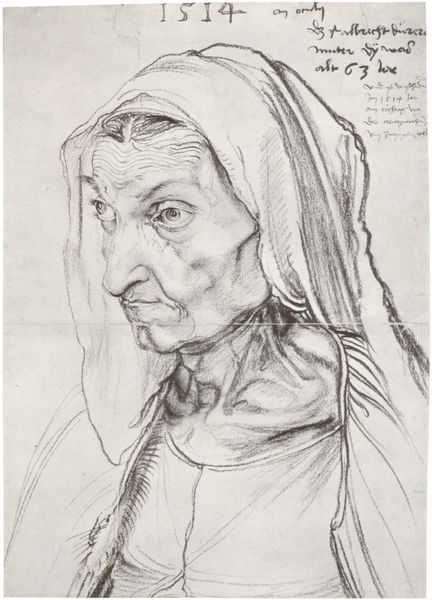
drawing, pencil
#
portrait
#
pencil drawn
#
drawing
#
facial expression drawing
#
dutch-golden-age
#
pencil sketch
#
caricature
#
portrait reference
#
pencil drawing
#
pencil
#
animal drawing portrait
#
portrait drawing
#
pencil work
#
portrait art
#
realism
Dimensions: height 135 mm, width 131 mm
Copyright: Rijks Museum: Open Domain
Editor: This is Cornelis Visscher's "Study of the Head of an Old Woman," created around 1654 to 1658, using pencil on paper. It's a surprisingly intimate and realistic portrayal. What strikes you about it? Curator: I'm drawn to the materiality of the drawing itself. Look at the evidence of labor, the visible pencil strokes. It wasn't effortless; it's a constructed image. This piece reflects a shift in artistic practice. What does it tell us about the social role of drawing and printmaking during the Dutch Golden Age, and Visscher's place in the artistic production? Was this a preparatory sketch or a work intended for sale? Editor: That's fascinating. I hadn’t thought about the commercial aspect. I was focused on the face itself, but now that you mention it, how the image might have been consumed definitely adds another layer. Curator: Precisely. The paper itself would have had a cost. Pencils weren’t readily available to everyone, suggesting a level of economic access. Also, consider the sitter. This wasn’t a commissioned portrait, but more like a study of working-class, anonymous persons, and their significance in visual imagery as commodities themselves. Editor: I see your point. By focusing on the process and the materials, we can understand a lot more about the context and its economic implications in artistic work. Curator: Indeed. Think about the societal value placed on representing this kind of subject, and how its commodification shaped both the artist’s process and the viewers consumption. Editor: This gives me so much to think about; viewing art as tied to production rather than existing on its own. Thank you! Curator: My pleasure. It’s the tangible elements that often tell the richest stories.
Comments
No comments
Be the first to comment and join the conversation on the ultimate creative platform.

